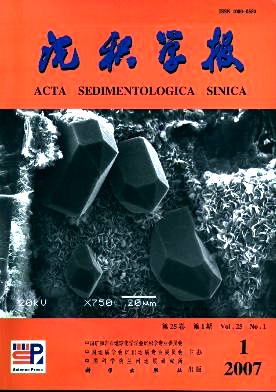The Discovery of Miocene Aeolian Sediments and Its Paleoenvironmental Significance in East China
- Received Date: 1900-01-01
- Rev Recd Date: 1900-01-01
- Publish Date: 2007-02-10
-
Key words:
- Miocene /
- aeolian sediments /
- sedimentary characteristics /
- Lingyan Hill /
- environment changes /
Abstract: The researches on the paleoclimatology and paleoenvironment recorded by the red clay have made much progress in the region of China's loess plateau during the past decade. The earliest red clay in the western part of the loess plateau is about 22 Ma old. While in the eastern region to Liupanshan Mountain, the bottom part of the red clay sequences is no more than 9 Ma. Red clay was regarded as the result of aeolian sedimentation which is similar to the loesspaleosol sequences. Red clay records have important significance in the studies on Asian environmental evolution in the Era of Cenozoic, especially on the fields of inland desertification and the impacts of the Tibetan Uplifting. But no aeolian sediments older than the early time of Pleistocene has found in East China.
On the basis of field investigation in the northern suburb of Nanjing, East China, the section of Lingyan Hill was discovered and the loesslike sediment layer was covered by basalt layers with the age of 12.17Ma. Field investigation and sampling was carried out and the whole sedimentary section was about 19 meters high not including the covered basalt layers. Under the basalt layer was the loesslike sediments. A general analysis about the loesslike sediments was carried out on the proxies of grain size, magnetic susceptibility, quartz SEM and geochemical elements. According to the sedimentary characteristics of the sediments and the laboratory analysis results, the 4metre thickness loess like deposits in the section of Lingyan Hill was regarded as the aeolian sediments with the age of more than 12 Ma, which is the earliest aeolian deposits in East China. The deposit is the result of climatic event in the midMiocene, which was corresponding with the 1513Ma rapidly strong deposition of aeolian sediments in the Qin'an section in Loess Plateau and the enlargement of ice sheet in Antarctic after 15Ma.
| Citation: | ZHANG Zhenke. The Discovery of Miocene Aeolian Sediments and Its Paleoenvironmental Significance in East China[J]. Acta Sedimentologica Sinica, 2007, 25(1): 116-123. |






 DownLoad:
DownLoad: